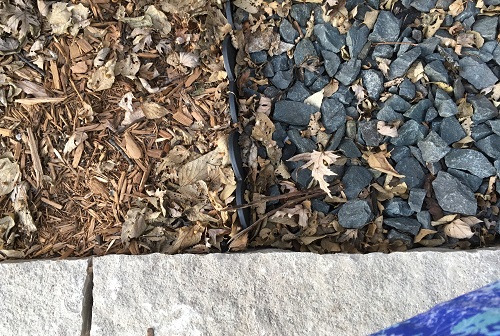Using Rock in Landscaping: Pros, Cons & Tips for Successful Plant Growth
Rock is not Mulch
As a gardener, I've used rock in landscaping too.
However, there are both pros and cons to consider before incorporating rock into your garden.
In this article, I will discuss these pros and cons and provide tips for successfully growing plants in a rock bed.
Choosing the Right Rock
Before considering the benefits of using rock in landscaping, it is important to choose the right type of rock. The first priority should be function over decoration.
While lightweight lava rock may be aesthetically pleasing, it can easily blow out of the bed.
On the other hand, large heavy rocks may trap debris and prevent easy clearing. Selecting a hard rock, such as river rock or granite, will ensure it lasts a lifetime.
Pros of Using Rock in Landscaping
The primary benefit of using rock in landscaping is its cost and labor. Unlike mulch, rock is a one-time purchase and does not need to be consistently refreshed.
Additionally, it can enhance your home's curb appeal when you choose a style and color that complements your landscape.
Rock is particularly suitable for foundation beds, as it minimizes the need to remove it to replace plants.
Cons of Using Rock in Landscaping
Despite its benefits, there are some drawbacks to using rock in landscaping. For instance, rock does not benefit the plants or the soil and creates less-than-ideal conditions for growing.
Perennials will struggle to push through landscape rock
While landscape fabric can help prevent weeds, it can constrict natural plant growth patterns, especially for perennials.
Additionally, rock can become too hot in the sun, which can damage heat-sensitive plants.
Tips for Planting in Rock with Landscape Fabric
Since rock does nothing to benefit your plants or the soil and does not present ideal conditions for growing, here are some tips for successfully growing plants in a rock bed:
Use a porous landscape fabric under the rock to prevent the rock from embedding and burying into the soil. This will help prevent weeds from sprouting from existing seeds and roots in the soil while still allowing water to penetrate.
Cut holes in the landscape fabric large enough to accommodate the full root ball of perennials. Remember that you will eventually have to dig it up to divide it.
Select native or sturdy perennials that will thrive without pampering, and consider specific rock garden plants. Heat-sensitive plants such as coral bells may struggle if not fail.
Keep the rock away from the base of plants, allowing at least 4 to 6 inches of bare soil. The soil can be covered with an organic mulch or compost but should not come within a few inches of shrub or tree trunks.
If you intend to plant annuals, select specific areas to section off with edging. You can use organic mulch with no fabric to make planting easy every year.
Monitor young plants until well-established to ensure they are not overheating and that the soil is not dried or over-watered.
Do not use more than one layer of landscape fabric, as that will further inhibit water absorption. Foundation beds under overhangs may receive very little water even if the bed is mulched, so be sure plants closer to the foundation receive adequate moisture.
Tip 4: Landscape rock and fabric should be kept clear away from plants. As the plant grows the opening needs to be expanded to accommodate larger plant base,
Tip 5: Create a mulched section for annuals with an edging strip to keep rock and mulch separated.
By following these tips, you can successfully grow plants in a rock bed and enjoy the beauty of both the plants and the rock in your garden.



